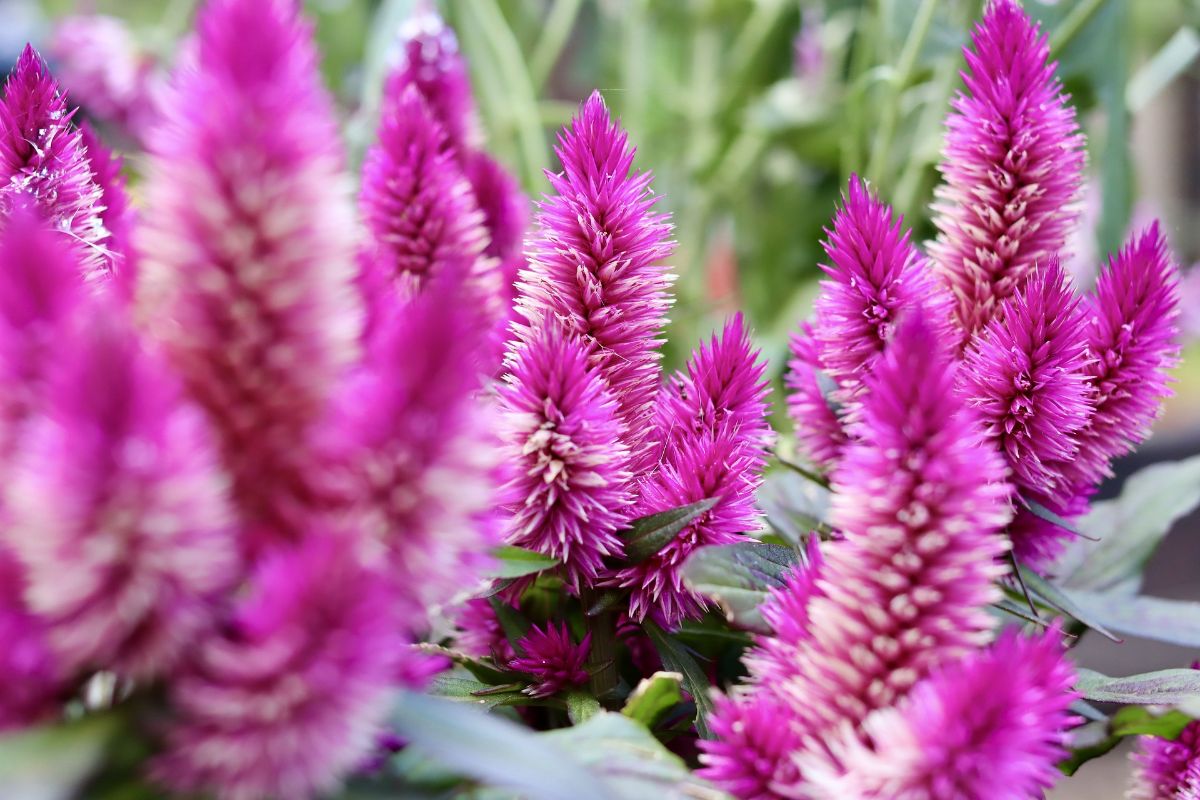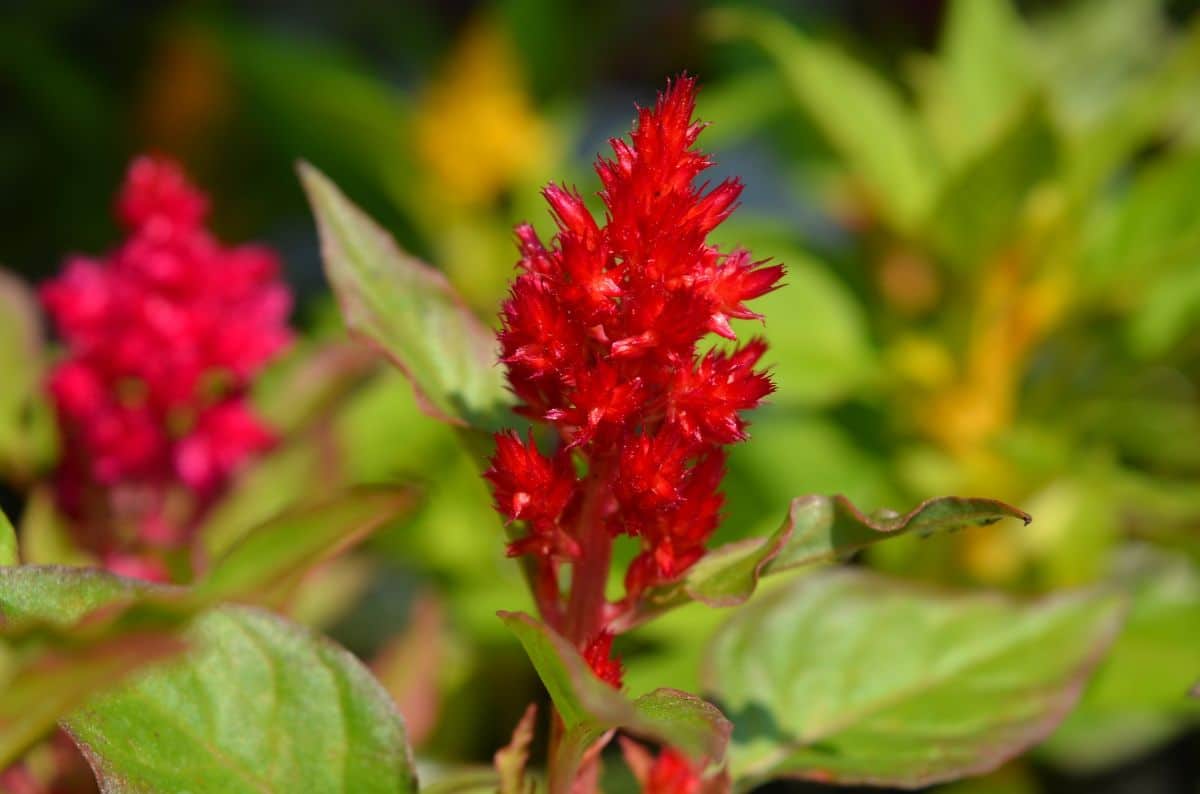
Surely, more than once, you have seen in the nursery or in large stores in the gardening section a plant that attracts you to touch it, and when you do, it is so soft and with such striking colors that you cannot help but take it home . We talk about the feathery lattice. Care has very little and is one of the most showy and decorative plants there is.
But if you have it, you must learn what the needs of this plant are so that it lasts a long time. Shall we talk about the care of the feathery lattice?
How is the feathery lattice

Before talking to you about the care that the feathery lattice It is convenient to know a little about this plant.
The feathery lattice, scientific name Celosia argentea var. feathery, is a plant that It can measure between 20 and 80 centimeters. Other names by which it is known are velvet, cockscomb or fan. It is native to Africa and India, areas where they are more common. Although it is also said that it is native to America, especially from the tropical zone.
They are annual plants, that is, they follow a cycle of birth, growth, development and death. Its most special feature is its flowers, which is the most striking, because they are grouped into very dense inflorescences with a feathery character that makes you unable to resist not touching it. Yes, it can be many colors, from red, yellow, pink, orange…
The flowering season of this plant is at the end of the summer and during the autumn, which is why it is common to see them in those weeks in supermarkets and nurseries (the rest of the time they go more unnoticed).
As for the leaves, they do not stand out too much since they are between 3 and 5 centimeters and green. Really the most remarkable are the flowers.
Celosia plumosa: care you need

Do you want to have a feathery trellis and are you worried about care? Do not worry because it is a plant that you can easily have at home and that is not too demanding. In addition, you have this care guide.
Location
The feathery lattice is a plant that usually adapts to everything. You can have it both outside and inside. Your best location? Outside the house and exposed to the sun.
It is a plant that it likes the sun a lot and it is the way it blooms since, if you have it at home, it will be more complicated for it to do so.
Of course, if the sun gets too hot where you live, especially in winter, it may be advisable to move it to a semi-shaded place, at least during the leaves of greatest solar incidence to prevent the leaves and flowers from burning.
As an indoor plant you can have it, but it is important to place it in an area with a lot of lighting, even direct sunlight (as long as there is no glass between them, as it could burn the plant by making a magnifying glass effect).
Temperature
This plant requires a minimum temperature, about 15-20 degrees. Below these it usually suffers because it is not its usual temperature.
So if you want to give the feathery lattice perfect care, its ideal would be between 20 and 23 degrees Celsius.
This means that it does not support frost and does not like drafts or drastic changes in temperature.
Earth
The substrate that this plant needs will depend on where you want to plant it. And it is that it is not the same to have it in the garden, on the ground, than to do it in a pot. Why? Because in this second case it cannot search for nutrients as it is limited in space.
That's why if you're going to plant it in a pot, make sure you put universal substrate mixed with 30% perlite (so that the soil drains well).
In the case of garden, you can put it on any kind of ground, although if what you want is for it to flourish and give you a large number of flowers, it is better in a land that is fertile.
Yes, some Experts recommend that the pH of the soil should be between 6 and 6,4 so that the plant feels comfortable. If this is higher, you may not get ahead.
In addition, they are demanding in terms of nutrients. For example, potassium, magnesium and boron are three components that, if you give them, will help the flowers not to come out small or deformed, but quite the opposite.

Irrigation
Watering is one of the most important needs of thecelosia plumosa. And also the one that can end the life of the plant. Therefore, you must know it thoroughly.
To start, you should know that It does not need constant or moderate watering. Depending on the time of year you will have to water it more or less. This means:
- In summer, you should water every other day. Or when you see that, due to the temperature, the soil dries out (if it is in full sun and in very hot weather, you may have to water it several times a day).
- In winter, you will have to water it only when you see that the soil is dry. That will depend on the weather, humidity, etc.
What is important is, when watering, not to do it on the flowers or on the leaves, because, first, with the sun they can burn; and second, you will make them attractive to insects and they can eat them. Always water at the base of the soil.
Subscriber
The feathery lattice does appreciate a paid during the spring and summer season because it helps you to bloom more intensely. Of course, remember to choose one that is suitable for this plant (covering its greatest needs).
You can use both liquid compost and pellets. And always using a somewhat smaller amount than the one reflected on the packaging.
Plagues and diseases
You shouldn't have a problem with the feathery lattice, though you have to take care of her powdery mildew and the mites. Also snails and slugs (because they have a predilection for this plant).
Multiplication
The reproduction of this plant is always carried out through seeds. These can be plant in spring or winter, but only if you have a greenhouse or an area where you can maintain a constant temperature above 15-18 degrees.
To do this, you just have to take a pot and put soil in it (you know, universal substrate with perlite)
Water, soaking the soil very well before putting the seed (if you do it the other way around, it can be lost at the end). Then you must put the seed, not too deep, and cover lightly.
With a spray, spray again in the area where the seed is and put everything in full sun.
The most important is always keep the substrate moist so that it germinates in about two weeks.
Have you ever had a feathery lattice? Do you enjoy it now? Tell us.